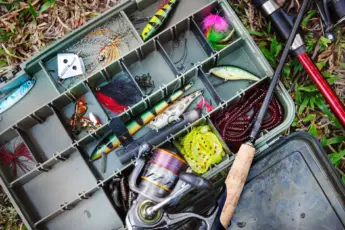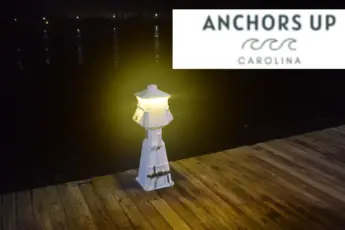In the coastal regions of the southeastern United States are an abundance of crab varieties. One of the most common types of crab that is found scurrying across the surface of beaches and marshy areas is the fiddler crab. The crabs, called fiddlers for short, scamper about in search of food before burying themselves in holes when threatened by humans, animals, and birds. Anglers find the crabs highly valuable when in search of inshore saltwater gamefish. Here are 5 things to know about the fiddler crab.
What Is A Fiddler Crab
Fiddlers are unique compared to the edible blue crab and stone crab harvested recreationally and commercially through Georgia, South Carolina, and North Carolina.
How To Identify A Fiddler Crab
These small crabs measure up to two inches and are identified by a brown or purple coloration with irregular splotches. However, the male and the female have distinct differences and are easy to differentiate. The males are equipped with one massive claw and one standard-sized claw compared to the female with two equally sized small claws.
Habitat Of A Fiddler Crab
When it comes to the habitat of fiddlers, they are found on mud and sand shorelines along brackish and saltwater lagoons, marshlands, beaches, and swamps.
To catch a glimpse of fiddlers, remain at a distance because they come quickly scared and scurry into tiny holes scattered about the edges of the water. However, once enough time passes, and you remain still, the crabs will remerge from burrows.
Why Are They Called Fiddler Crabs
Fiddlers share the musical instrument’s name, a fiddle, for two reasons. Here are the reasons why a fiddler crab is called takes on the instrument’s name.
Fiddler Crab Claw Shape And Size
One of the most notable differences between the male and the female fiddler is the size of one claw. The male is equipped with a more prominent claw compared to the female. As a result of the size and shape of the claw, hence the name fiddler.
A fiddle is a musical instrument that is shaped with a long narrow extension from the top and oblong section beneath. When comparing a fiddle to a fiddler crab, the arm extending from the body and claw resembles the shape of a musical fiddle.
Fiddler Crab Sound Production
However, the crab shares a second similar connection to the musical fiddle in addition to the shape of the claw.
The fiddler produces sounds with the large claw by quickly hitting the body or hard objects along the ground. Fiddler crabs create sounds for the purpose of attracting a female crab for mating.
Why Do Fiddler Crabs Have A Big Claw
The fiddle-shaped claw serves multiple purposes, including self-defense and mating. If a claw is lost, the crustacean can grow new claws as a replacement. However, the fiddler becomes vulnerable to attack between the periods when the claw is lost until the new claw becomes fully developed.
What Does The Fiddler Crab Eat
When it comes to the consumption of food, the fiddler has a vast appetite that also includes ingesting sand.
The main staples of a fiddler crabs diet include bacteria, fungus, and algae. All three of these are removed from sand and other objects however, sand also becomes ingested with the food.
When watching fiddlers roam the beach, you will notice piles of sand balls. The sand balls are created by the fiddlers as they spit the sand by separating it from the food.
A fiddler is critical to the ecosystem of marshlands because they help them grow by keeping them clean. The holes created by fiddlers allow for oxygen to reach the roots of marsh grass allwing for more robust and healthy growth patterns.
Why Are Fiddler Crabs Important To Anglers
Inshore saltwater angling in the southeastern states including Georgia, South Carolina, and North Carolina, is superb. Anglers have the opportunity to catch an abundance of gamefish on various types of baits.
Why Fiddler Crabs Make Excellent Bait
When it comes to inshore angling in the southeast, fiddler crab is an excellent and close comparison to live shrimp.
A significant number of species feed on fiddlers therefore anglers who fish them beneath a float or on the bottom find success.
Remember to keep the crab alive by hooking it through the side above the legs or through the back from the bottom and out through the top of the shell.
What Kind Of Fish Eat Fidder Crab
A significant number of inshore fish dine on fiddlers. The species of inshore fish that eat fiddler crabs include redfish, black drum, and sheepshead. All three species make excellent table fare but remember to purchase a saltwater fishing license and follow the state’s harvesting regulations. Read more about what types of fish you can catch with fiddlers.
Remember These 5 Things To Know About Fiddler Crabs
Don’t be alarmed when you see large packs of small crabs running along the surface of the sand and marsh shorelines. The fiddler is abundant in Georgia, South Carolina, and North Carolina. Not only are they important for the ecosystem but they make excellent fishing bait. Keep an eye out for fiddlers the next time you are visiting the coastline.






